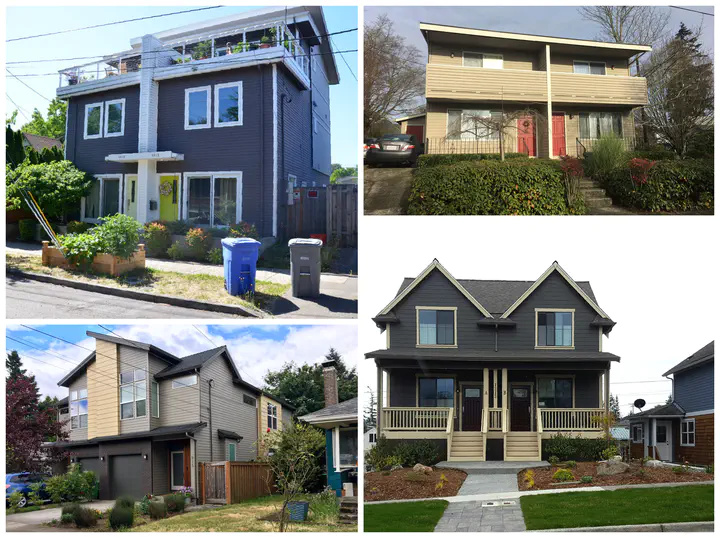Working Paper - In Search of the Missing Middle: Historical Trends in and Contemporary Correlates of Small Multifamily Development
 Image credit: [www.flickr.com/photos/sightline_middle_housing/48309226182/]
Image credit: [www.flickr.com/photos/sightline_middle_housing/48309226182/]
Abstract
Missing middle housing is an important, though often overlooked housing form in America’s built environment. Although still a large component of the US housing stock, production of new missing middle housing—which we define as small multifamily structures with 2 to 4 units—has been steadily declining over the last several decades. In the early 1980s, units in missing middle structures comprised around 9% of residential building permits nationally. Today, less than 3% of new building permits are for 2 to 4 units structures. In this paper, we document these trends and explore possible reasons for the current variation in new missing middle housing production. We build a national, place-level dataset combining data on building permits, current and historical census data, land use regulations, and supply characteristics. We then examine the association between three sets of community characteristics and missing middle production supply, regulatory restrictiveness, and existing demand. Our analysis suggests that a place’s location (distance to the nearest CBD), the age of its population, the size of its existing rental housing stock, and its historical (as of the 1970 Census) share of housing units in missing middle structures are strong predictors of missing middle permitting. We also find a non-linear relationship between regulations and missing middle permitting, with lightly and heavily regulated places issuing fewer missing middle permits. We end our analysis by considering how these findings can help cities that have recently passed or are currently considering zoning reforms that broadly legalize missing middle housing forms.